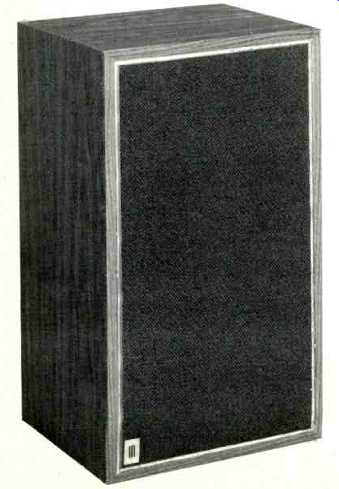
MANUFACTURER'S SPECIFICATIONS
System Type: three-way, totally enclosed.
Components: One 12-in. woofer, one 3 1/2-in. mid-range and one 2 1/2-in. cone tweeter.
Frequency Response: 30 to 18,000 Hz
Power Handling: 60 watts.
Nominal Impedance: 8 ohms.
Dimensions: 25 1/2-in. H by 14 1/2-in. W by 12-in. D.
Finish: Walnut Formica finish
Price: $169.95
Although we have heard Martin speaker systems at audio shows from time to time, this is the first model to be reviewed in these pages-apart from the small model included in last month's survey. The "Crescendo" is the largest bookshelf system in the range and it certainly compares favorably with its competitors. The bass unit has a large magnet and a 2-in. voice coil with a flexible cone surround to permit wide excursions. Free air resonance is 22 Hz and the cross-over frequency is around 700 Hz. The midrange speaker is a 3 1/2-in. closed-back type and it has a small center-dome to aid dispersion. At 6 kHz, another crossover transfers the output to the tweeter which also has a center-dome. Both cross-over slopes are very gentle at 6 dB per octave, thus giving a smooth transition and avoiding the annoying impression of three separate sound sources which sometimes occurs with steep-cut crossovers. Level controls are fitted for both middle and treble ranges. In short, the Martin "Crescendo" is an excellent example of a solid, well-proven design with no gimmicks or "revolutionary acoustic principles."
Performance
Frequency response taken with one-third octave band pink noise is shown in Fig. 1. With the controls at maximum it will be seen that there is a rise in output from about 5 kHz.
With the treble control turned back about one third and the mid-range slightly more, a response of +3dB was obtained from 200 Hz to 10 kHz-a creditable achievement. Figure 1 also shows the response 45 deg. off-axis and an average of 5 positions. Dispersion is well-maintained up to 10 kHz after which there is some beaming and response falls off from 17 kHz. White noise showed up no objectionable coloration unless the midrange control was turned to near-maximum.
Distortion characteristics are given in Fig. 2 and tone-burst responses at 3 frequencies (2 near the cross-over points) in Fig. 3. System resonance was exactly 50 Hz and the Crescendo would handle a continuous sine wave power of 10 watts without audible frequency doubling at 30 Hz and 20 watts at 40 Hz.
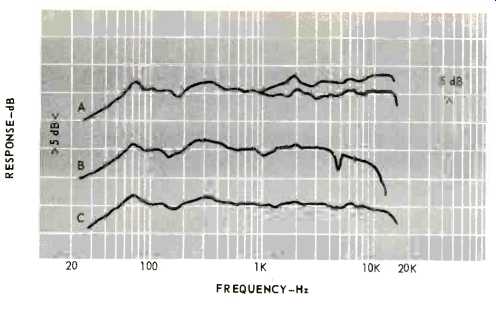
Fig. 1--Frequency response taken with one-third octave pink noise. A is taken
on-axis, B is 45 degrees off-axis and C is an average at 5 positions.
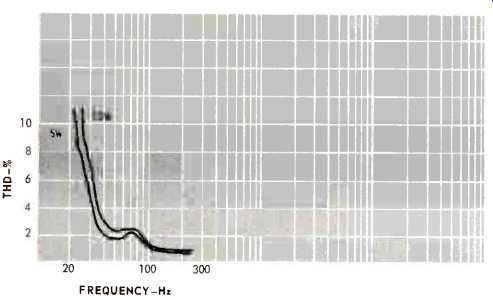
Fig. 2--THD at low frequencies.
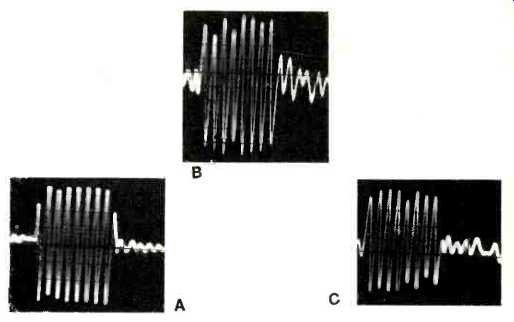
Fig. 3--Tone-burst response at A, 200, B, 1000, and C, 5000 Hz.
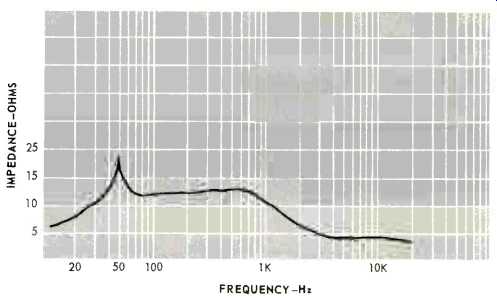
Fig. 4--Impedance characteristics.
Sensitivity is somewhat higher than average and an SPL of 100 dB at one meter was produced by an input of just over 1 watt. Thus, an amplifier power of 20 watts per channel would be adequate for quite large rooms. The impedance curve is shown in Fig. 4 and it will be seen that the lowest point is 4 ohms, with an average of about 10.
Listening Tests
Listening tests with a variety of program material confirmed the test figures. Bass was solid, rather tight and well-controlled with no trace of boom. The high frequencies were commendably free from harshness and the transient response was good.
In general, the sound quality could be described as being slightly forward but not strident. Rather like being in the first three rows of a concert hall instead of way back in the tenth. At $169.95 it represents excellent value and is worthy of investigation by those in search of a bookshelf system with high performance at a modest price.
-T.A.
(adapted from Audio magazine, Oct. 1972)
Also see:
Electro-Voice speakers (ad, Mar. 1973)
Electro-Voice Interface:A speaker sytem (Equip. Profile, Mar. 1976)
Dynaco A-25XL Loudspeaker (Equip. Profile, Nov. 1976)
ESS Mk VII Speaker System (Jan. 1973)
= = = =